Varicose veins on the legs are a disease accompanied by a disorder of the venous valves functions.The disease is dangerous: there is the risk of development of thrombophlebitis (inflammation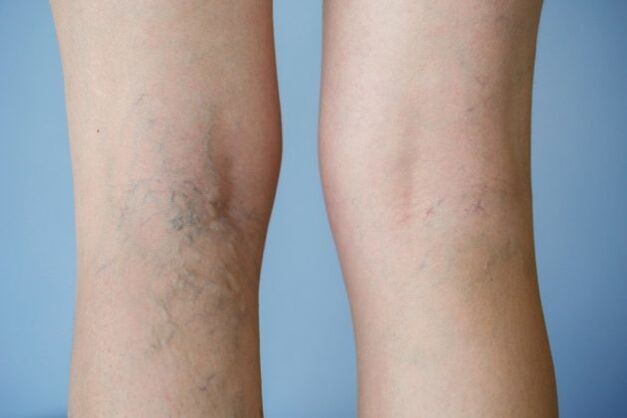 internal walls of the blood vessels) and blood clots that can overlap with the lumen of the pot.Varicose veins on the legs are a disease accompanied by a disorder of the venous valves functions.Very often there are varicose veins on the legs.There is a persistent and irreversible expansion and a change of length, while the venous wall is thinner.About every third woman and every tenth man in one degree or another manifest varicose veins.The beginning of the development of the disease falls to the most skilled-30-40 years.Varicosis begins with a deterioration of the appearance of the legs.When the pathology reaches the advanced phases, complications develop.Over time, the treatment initially eliminates the patient from the need for surgery.Varicosis can be determined by the characteristic spheres of the veins that protrude over the surface of the skin.The appearance of twisted vases, expanded and protruding on the legs.In addition, you can see how dark blue spots and pignons appear on the skin.They also indicate the development of the pathology of the blood vessels.With the progression of varicosis vessels, the vases can expand so that the grape clusters begin to resemble.The diagnosis of varicose veins is carried out on the basis of the patient complaints, the examination of the lower limbs, laboratory and instrumental exams.In the early stages, patients often do not go to the hospital, because the lack of pronounced symptoms gives the impression that everything goes well with ships.The diagnosis of varicose veins is based on laboratory and instrumental exams.During the inspection, the patient must be standing.In this position, it is easier for a doctor to determine the presence of vascular disorders and deviations in a normal blood flow.Depending on the severity of the deformation of the veins, the presence of a vascular model is determined, the stadium of the varicose veins.During palpation, they determine:
internal walls of the blood vessels) and blood clots that can overlap with the lumen of the pot.Varicose veins on the legs are a disease accompanied by a disorder of the venous valves functions.Very often there are varicose veins on the legs.There is a persistent and irreversible expansion and a change of length, while the venous wall is thinner.About every third woman and every tenth man in one degree or another manifest varicose veins.The beginning of the development of the disease falls to the most skilled-30-40 years.Varicosis begins with a deterioration of the appearance of the legs.When the pathology reaches the advanced phases, complications develop.Over time, the treatment initially eliminates the patient from the need for surgery.Varicosis can be determined by the characteristic spheres of the veins that protrude over the surface of the skin.The appearance of twisted vases, expanded and protruding on the legs.In addition, you can see how dark blue spots and pignons appear on the skin.They also indicate the development of the pathology of the blood vessels.With the progression of varicosis vessels, the vases can expand so that the grape clusters begin to resemble.The diagnosis of varicose veins is carried out on the basis of the patient complaints, the examination of the lower limbs, laboratory and instrumental exams.In the early stages, patients often do not go to the hospital, because the lack of pronounced symptoms gives the impression that everything goes well with ships.The diagnosis of varicose veins is based on laboratory and instrumental exams.During the inspection, the patient must be standing.In this position, it is easier for a doctor to determine the presence of vascular disorders and deviations in a normal blood flow.Depending on the severity of the deformation of the veins, the presence of a vascular model is determined, the stadium of the varicose veins.During palpation, they determine:
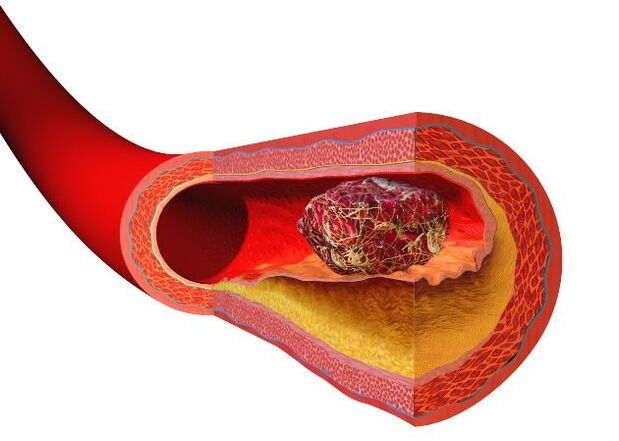
- soreness;
- the density of deformed ships;
- the length of the pathological sections of the veins;
- The presence of elevated temperature to the lesion.
The advanced method of vascular diagnosis is magnetic resonance imaging (MRI).The doctor must prescribe a duplex or an additional scan of blood vessels.A special preparation of the patient is not required for this diagnostic procedure.Using ultrasound, it is possible to diagnose varicose veins in an initial phase.The advanced method of vascular diagnosis is magnetic resonance imaging (MRI).A blood test is required to determine the number of red blood cells and the level of hemoglobin.Overcoming the platelet norm indicates a violation of blood coagulation.Leukocytosis indicates the development of an inflammatory process in the body.Varicosis of the lower limbs is treated through surgery on the vases altered by the disease using sclerotherapy or medicines.Therapeutic physical education and the use of therapeutic knitwear are actively used.Proper nutrition is important in the treatment of the disease, enriched with vitamins, which allows us to prevent the development of obesity.Proper nutrition is important in the treatment of the disease, enriched with vitamins, which allows us to prevent the development of obesity.Drugs (creams, ointments, varicose veins tablets are used in the early stages of the development of the disease).Are prescribed for:
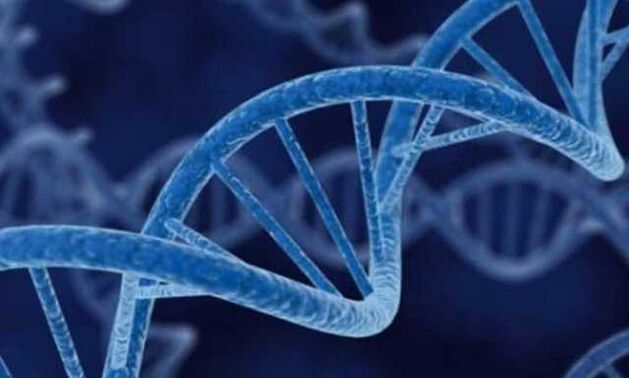
- Pain reduction;
- removal of the edema;
- Improve the functioning of the veins valves;
- increasing the tone of the walls of the veins;
- restoration of normal blood flow;
- Prevention of the development of complications of varicose veins.
Drug therapy for the treatment of varicose veins of the lower limbs.All drugs with adequate use do not cause side effects.Folk methods for the treatment of the disease have advantages:
- eliminate the causes of the disease;
- they have no contraindications;
- have a large number of vitamins in their composition;
- Available for all patients.

For the treatment of patients of the veins, chestnuts on horseback is used.The extract of it is part of creams, gel against varicose veins.With surgery, the interested veins are removed.This does not interfere with normal blood circulation and does not represent a danger to the body.The load is taken on deep veins, which compensate for the missing surface blood vessels.Sklerotherapy can also be prescribed to the patient.The principle of the operation is that the drugs that glue its walls and cover the game are introduced into the ship.To prevent varicose veins, you must engage in swimming.To prevent varicose veins, it is necessary:
- take a break for sedentary work or standing;
- abandon the habit of throwing your feet on the leg during the seat;
- Do not wear narrow and narrow clothes;
- Women refuse to wear hair shoes;
- fight constipation, introduce products that normalize the functions of the intestine in the diet;
- engage in swimming;
- During the night of the night, it raises the legs (about 20 cm above the heart level);
- abandon smoking and drinking alcohol;
- Drink at least 2 liters of water per day to avoid dehydration;
- Don't abuse the sun.
The varicose veins of the lower limbs involve the use of a special knitwear or elastic bandages to reduce the load on the vein and exclude the stagnation of the blood.When choosing compression products, the degree of development of varicose veins and the characteristics of the structure of the legs is taken into consideration.Compression therapy can be prescribed at any phase of the development of the disease.In order to prevent the progression of the disease, the products that strengthen the walls of the vessels are prescribed.The diet should include all the fruits or berries rich in vitamin C. The amount of seafood - mussels, oysters, prawns in the daily menu.An important place in therapeutic nutrition occupies Sheet metal vegetables, lentils, celery, apples, oatmeal.They provide a normal intestine, eliminate constipation.In addition, these dishes contribute to weight loss, necessary in the treatment of varicose veins.Complications occur in the advanced phases of the development of the disease.They are a danger to patient's health and life.Symptoms such as an increase in body temperature (not only in the area of damage), weakness, acute pain in the lower limbs can indirectly indicate the development of complications of varicose veins.They appear with a serious decompence for the flow of blood.There is an increase in the permeability of the ship's wall, which is why the skin is obscured.With the progression of the pathological process, a whitish seal appears and, following injuries, the risk of development of the ulcer increases significantly.For the treatment of varicose veins, measures are required to activate the growth of the elements of the connective tissue.It is prescribed to wear an elastic bandage.For the treatment of varicose veins, measures are required to activate the growth of the elements of the connective tissue.It is prescribed to wear an elastic bandage.Vitamins, antispasmodic, anti -anti -anti -inflammatory drugs, system enzymes and drugs that improve fat metabolism are shown.With such a disease, clots are formed, clogging the light in the vessels located under the skin.At the same time, the inflammation of the vein wall occurs.Symptoms of thrombophlebitis:
Sheet metal vegetables, lentils, celery, apples, oatmeal.They provide a normal intestine, eliminate constipation.In addition, these dishes contribute to weight loss, necessary in the treatment of varicose veins.Complications occur in the advanced phases of the development of the disease.They are a danger to patient's health and life.Symptoms such as an increase in body temperature (not only in the area of damage), weakness, acute pain in the lower limbs can indirectly indicate the development of complications of varicose veins.They appear with a serious decompence for the flow of blood.There is an increase in the permeability of the ship's wall, which is why the skin is obscured.With the progression of the pathological process, a whitish seal appears and, following injuries, the risk of development of the ulcer increases significantly.For the treatment of varicose veins, measures are required to activate the growth of the elements of the connective tissue.It is prescribed to wear an elastic bandage.For the treatment of varicose veins, measures are required to activate the growth of the elements of the connective tissue.It is prescribed to wear an elastic bandage.Vitamins, antispasmodic, anti -anti -anti -inflammatory drugs, system enzymes and drugs that improve fat metabolism are shown.With such a disease, clots are formed, clogging the light in the vessels located under the skin.At the same time, the inflammation of the vein wall occurs.Symptoms of thrombophlebitis:

- redness of the vein concerned;
- strong pain;
- the aspect of subfebral temperature;
- Seal of the soft felt soft fabric on palpation.
This vascular disease requires urgent hospitalization of the patient and emergency surgery.This vascular disease requires urgent hospitalization of the patient and emergency surgery.Pregnancy is the most common cause of the development of disease in women.Pregnancy is the most common cause of the development of disease in women.During pregnancy, you can wear compression linen.The dishes rich in vitamins should be included in the diet.
Complications of varicose veins: because they present themselves and how they are treated
The varicose veins of the lower limbs, like any other disease, have its consequences.The complications of varicose veins negatively influence human health.Their development is generally associated with the premature onset of the treatment of the disease.The first symptoms of varicose veins cannot be ignored.This disease cannot pass independently - slowly, but constantly the condition of the vases will not only worsen.Even the minor symptoms of varicose veins can cause irreversible complications.
Why can complications arise with varicose veins?

The possible complications of the varicose veins appear more often because the disease progresses too quickly or was not due to its adequate treatment.Sometimes the cause of the consequences is an ineffective or incorrectly selected therapy.Therefore, if there are the first signs of the varicose veins, it is recommended not to ignore the beginning of the pathological process, but to ask for qualified help from a phlegology specialist.Only one doctor will be able to choose the tactics of the treatment, prevent the further development of the varicose veins on the legs and its subsequent complications.More information on what complications varicose veins are dangerous →
Swelling
The swelling of the lower limbs is the most common complication of varicose veins.They are classified in two types: milk and blue.The edema of the milk on the legs is a symptom of the deep vein thrombosis.With this complication, the skin acquires a white shade and the leg itself seems swollen and the pain is felt in the direction of down.In this case, the limb becomes hot and thicker during the survey.The treatment is generally surgical, since it is important to eliminate the movement of blood clots in the heart and lung artery.The blue edema is more dangerous than milk.In this case, the lower limbs begin to swell from the bottom up, with a painful tension of the skin, which are painted in a blue-black color.The cause of the blue edema is the phenomena of stagnant blood, which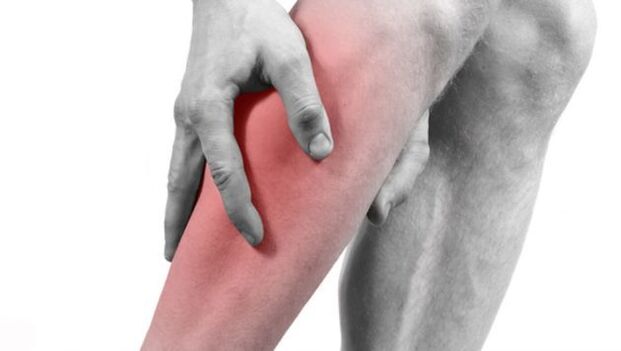 It causes hypoxia or a lack of oxygen taking the lower legs of the legs.If the appropriate measures are not adopted in the shortest possible time, it is very likely that the disease will spread above.Due to the stagnation of the blood in the vessels and the lack of trophism of the legs on the skin, a complication like trophic ulcers will form.In the absence of help in this case, the probability of gangrene and the subsequent death of the patient is high.The treatment of the Edema of the lower limbs is to wear compression jersey clothing, taking fleum drugs.The surgical treatment is based on the removal of the vein affected by surgically or laser coagulation.
It causes hypoxia or a lack of oxygen taking the lower legs of the legs.If the appropriate measures are not adopted in the shortest possible time, it is very likely that the disease will spread above.Due to the stagnation of the blood in the vessels and the lack of trophism of the legs on the skin, a complication like trophic ulcers will form.In the absence of help in this case, the probability of gangrene and the subsequent death of the patient is high.The treatment of the Edema of the lower limbs is to wear compression jersey clothing, taking fleum drugs.The surgical treatment is based on the removal of the vein affected by surgically or laser coagulation.
Phlebitis
The possible complications of the varicose veins include phlebitis due to inflammatory processes in the walls of the veins.Generally, the pathology affects a vein located under the surface of the skin.The primary symptom of phlebitis is pain and seal along the vein, influenced by inflammation.In acute phlebitis, the skin becomes red and becomes warm to the touch, the touch causes discomfort and pain.If the single veins are inflamed, the situation is tolerant.But if the disease has affected many veins, the condition becomes unbearable.In the absence of adequate treatment, Phleit soon develops in thrombophlebitis.These complications of the varicose veins of the lower ends may also occur a turning point of the vein concerned and bleeding.Flitto treatment is usually drugs.
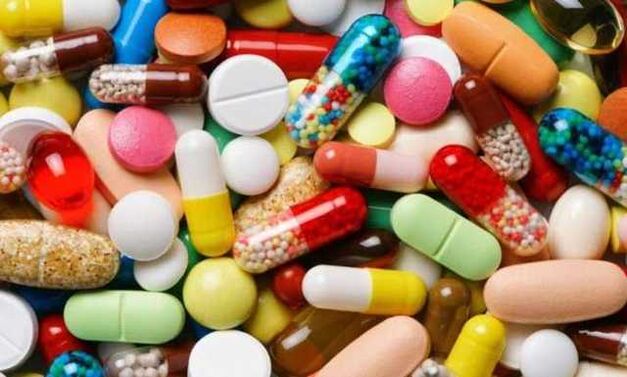
Assigned:
- local use of compresses with drugs;
- receipt of non -pounded anti -inflammatory drugs;
- Preparations that improve the retiological properties of the blood and feed the walls of the blood vessels.
In the event of a simple lesion of the surface veins, the treatment on an outpatient basis is carried out, with the development of complications and deterioration, the treatment in the hospital is indicated.
Thromboflebitis
Another complication of the varicose veins of the lower ends is thrombophlebitis.This condition is characterized by the presence of blood clots in inflamed veins.Tromboflebitis, as a rule, is the next step after Flebitite.A thrombus is a blood clot that differs qualitatively from a normal grumus of rolled blood.When bleeding stops, the blood turns into a small clot due to the sedimentation of the platelets in the wounded areas of the blood vessels.A thrombus has a thicker structure than a normal blood clot.On the walls of the veins, blood clots are formed several times more often than in the arteries.This education is partially attached to the ship's wall, its main part is free in the lumen of the vein.The clothes can detach themselves and, together with the general blood flow, are transferred closer to the lungs and the heart, which is dangerous for the death of a person.
Symptoms of thrombophlebitis:
- pull pain in the legs;
- swelling of the legs;
- hyperemia and seal of the fabrics concerned;
- Less commonly - general weakness and deterioration.
The treatment of thrombophlebitis usually consists in the surgical removal of the interested veins.If the operation for some reason is temporarily impossible, the conservative treatment is carried out under medical supervision.
The basis of drug therapy is the basis for:
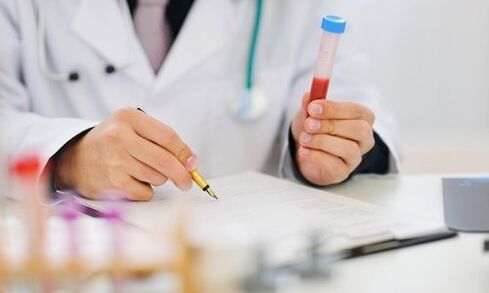
- Non -pounding anti -inflammatory drugs;
- Routine derivatives;
- Diggarts.
At the first symptoms of a separation of the thrombus, the operation cannot be postponed.
Thrombosis
The diagnosis of thrombosis is the progression of thrombophlebitis, the following complication with varicose veins of the legs.This condition is characterized by the formation of blood clots in the deep veins, threatens human life, since they are these veins that are associated with the heart and lung artery.The disease usually develops in the thickness of the calf muscles.The symptoms of thrombosis are an edema abruptly appeared of an ankle and a sensation of the outbreak of the calf muscles.If the blood clots rise above, the veins of the peritoneum, the pain and the edema appear throughout the lower limb.Sometimes the symptoms of pain and edema appear in one leg, although the disease affects the other leg.According to statistics, the left limb often suffers from thrombosis.
























